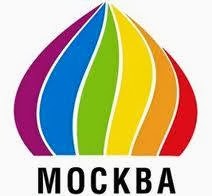Russia is not an easy place to be gay. Though homosexuality is no longer outright illegal -- and has not been considered a mental disorder since 1999 -- a stubbornly homophobic strain of nationalism persists. Russians are at least talking about homosexuality today in a way that wasn't possible during the Soviet period -- a silence that left a gaping hole in Russia's historical record.
In Russian, a gay cruising site is called "pleshka," which literally means a "clear area." (It also refers to bald spots on the top of the head.) Toward the end of the Soviet period, the statue of Karl Marx on Sverdlov Square (now Theater Square) was known as "director of the Pleshka."
This was typical Soviet humor. Gay men and women were poking fun at Marx by turning him into their own gay icon. Similarly, statues of Lenin in regional city centers were known in gay parlance as "Aunt Lena" and men arranged dates in code by saying, "Let's meet at Aunt Lena's.
Many homosexuals were drawn to the promise of Marxism. There was a certain tolerance and even gay liberation in the early years of the Soviet Union, before homosexuality was re-criminalized in 1933 and the community went back underground. Karl Marx and Friedrich Engels said very little on the subject in their published works. The Communist Manifesto does not address the issue of sexual orientation or gender identity. Later Communist leaders and intellectuals took many different positions on LGBT-rights issues.
The German Communist Party, during the Weimar Republic, joined with the Social Democrats in support of efforts to legalize private homosexual relations between consenting adults. Yet, the situation for LGBT rights in the first Communist government in Russia were something of a mixed bag.
The Communist Party abolished all Czarist laws and its subsequent criminal code in the 1920s, did not criminalize non-commercial same-sex sexuality between consenting adults in private. However, homosexuality remained a criminal offense in certain "uncivilized" Soviet Union states in the 1920s as part of an effort against "uncivilized" cultural practices.
In the U.S., the anti-communist and anti-gay crusades coincided and overlapped. The two emerging crusades reinforced the other. The "Red" and "Lavender" scares during the McCarthy era took place during the same time, when government officials saw conspiracies everywhere. The federal government and the communist party were both purging homosexuals, fearing security risks. Anti-gay sentiments began to fuse with anti-communist rhetoric.
Harry Hay was a communist activist who was forced out of the Communist Party and later became one of the founders of the gay rights movement in the United States. Hay founded the Mattachine Society, one of the earliest homophile organizations in the United States, probably second only to Chicago’s Society for Human Rights founded in 1924. Harry Hay and a group of Los Angeles male friends formed the group to protect and improve the rights of homosexuals. Because of concerns for secrecy and the founders’ leftist ideology, they adopted the cell organization being used by the Communist Party of the United States. Hay appropriated writings of the Soviet dictator Joseph Stalin; he used Stalin's definition of national minorities to come up with the idea that gay men and women both constitute a minority. In the anti-Communist atmosphere of the 1950s, the Society’s growing membership replaced the group's early Communist model with a more traditional ameliorative civil-rights leadership style and agenda.
From the 1930s until the 1980s, persecution of homosexuals was the only thing the two superpowers agreed on. They agreed they didn't want gay people and each tried to blame their existence on each other. Today, the two countries are going in very different directions when it comes to gay rights. As of June 2013, twelve states as well as the District of Columbia and three Native American tribes have legalized same-sex marriage. In Russia, lawmakers recently passed a preliminary version of the gay "propaganda" bill, which activists fear could be used to outlaw homosexuality once again, by a vote of 388 to 1.


4 comments:
I found this fascinating! Thanks for the history lesson!
Once again, we find on this site facts and history that are not known by most! Thanks!!!
This was an excellent treatise. Thank you. I've wondered about the current news from Russia about LGBT parades, and attacks. This gives me some background on it.
Peace <3
Jay
I would like to meet the one person who voted against that "propaganda" bill. A brave soul indeed. My thank to them for being the lone voice for humanity.
daemon
Post a Comment